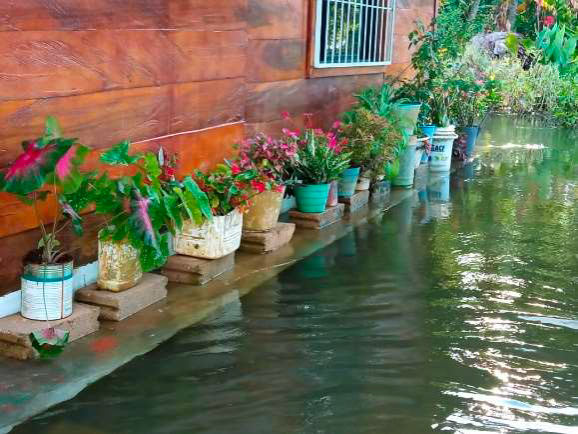

This Building block recognizes the increasing weather volatility (particularly in the form of precipitation) that will be felt in La Mojana as a result of climate change. While some local early warning capacities existed, weather station coverage and data management capacity were insufficient for localized weather alerts that would allow communities to protect local livelihoods, particularly as past flooding incidents had resulted in important economic losses and affected water and weather security.
The project addressed the need for early warning systems by enhancing the development of a regional forecasting center with the capacity for hydrological modelling as well as in the development of early warning information products. This has resulted in the development of timely agro bulletins and alerts that have enhanced communities' access to climate information. The project has also provided information on how to manage early alerts, looking to integrate local capacity. This brings a move from information to action while also relating to the investments made through building blocks 2, 3 and 5 that generate adaptive capacity in water management for household and productive use.
A hydrological study of the wetland systems developed by the National Adaptation Fund that incorporated climate change demonstrated the relevance of early warning systems to protect livelihoods and why it needed to be enhanced. The project also developed a relationship with the national meteorological system (IDEAM) that allowed the development of a regional forecast system to be integrated within the national network of stations.
Early warnings provide a baseline for action as it allows communities to tangibly understand the relevance of project investments and how it relates to them. This is key considering past flooding incidents with devastating effect to livelihoods. However providing these alerts and bulletins is insufficient if it’s not paired with an active socialization strategy so that information is understood and leads to improved decision making. Working with productive associations, local responsible parties and local environmental authorities has been a pillar in communicating information to communities.
The project has enhanced local capacities. However, a long term sustainability strategy is still under development to ensure that once the project is over the regional forecasting center remains operational. This is facilitated by an agreement with IDEAM for the maintenance of the stations that have been invested as well as with the existence of learning institutions in the region and strong environmental authorities.